1971 War: Indian accounts
(→Heroes) |
(→Swadhin Bangla Betar Kendra radio station) |
||
| Line 93: | Line 93: | ||
The ‘Concert for Bangladesh’ opened at New York’s Madison Square Garden with Pandit Ravi Shankar, Ustad Ali Akbar Khan, Ustad Alla Rakha, Harrison, Bob Dylan, Ringo Starr, Billy Preston and Eric Clapton in performance. The songs and the footage of Bengali refugees moved the world. More than $12 million was raised, and a documentary film was made. “This concert literally gave Bangladesh world recognition,” says Yousuff. | The ‘Concert for Bangladesh’ opened at New York’s Madison Square Garden with Pandit Ravi Shankar, Ustad Ali Akbar Khan, Ustad Alla Rakha, Harrison, Bob Dylan, Ringo Starr, Billy Preston and Eric Clapton in performance. The songs and the footage of Bengali refugees moved the world. More than $12 million was raised, and a documentary film was made. “This concert literally gave Bangladesh world recognition,” says Yousuff. | ||
| − | [[Category:Defence|1971 WAR: INDIAN ACCOUNTS]] | + | =War heroes= |
| − | [[Category:History|1971 WAR: INDIAN ACCOUNTS1971 WAR: INDIAN ACCOUNTS1971 WAR: INDIAN ACCOUNTS | + | ==The top heroes== |
| + | [https://epaper.timesgroup.com/olive/odn/timesofindia/shared/ShowArticle.aspx?doc=TOIDEL/2021/12/16&entity=Ar02000&sk=978EBF7F&mode=text Dec 16, 2021: ''The Times of India''] | ||
| + | |||
| + | ''' LANCE NAIK ALBERT EKKA (POSTHUMOUS) — PARAM VIR CHAKRA ''' | ||
| + | |||
| + | Ekka belonged to a tribe in Gumla, Jharkhand, and was a skilled hunter. He was at Gangasagar on the Eastern front where Indian troops faced intense shelling and small arms fire on December 3. He charged at an enemy bunker, bayoneted two soldiers and silenced a light machine gun. Although seriously wounded, he continued to clear bunkers. When a medium machine gun opened up from a building, he lobbed a grenade into a bunker, killing a soldier and injuring another. He scaled a wall, entered the bunker and bayoneted a soldier who was still firing. He later succumbed to injuries | ||
| + | |||
| + | ''' 2ND LIEUTENANT ARUN KHETARPAL (POSTHUMOUS) — PVC ''' | ||
| + | |||
| + | Commissioned in 17 Poona Horse in June, Khetarpal (21) was at Basantar when Indian troops at Jarpal (Shakargarh sector) were attacked by a Pakistani armoured regiment on December 16. The squadron commander asked for reinforcements and Khetarpal moved in. One of his tank commanders was killed but Khetarpal continued to attack. When enemy tanks started pulling back, he chased and destroyed one. The enemy launched another attack but was held back by 3 tanks, one of which was manned by Khetarpal. In the battle, 10 Pakistani tanks were destroyed, 4 by Khetarpal. But his tank was hit. Khetarpal was wounded and told to abandon it but he continued engaging the enemy. He destroyed a tank before another hit killed him | ||
| + | |||
| + | ''' FLYING OFFICER NIRMAL JIT SINGH SEKHON (POSTHUMOUS) — PVC ''' | ||
| + | |||
| + | Born at Isewal, Ludhiana, Sekhon was a pilot in a Gnat detachment based at Srinagar for the air defence of the Valley. | ||
| + | |||
| + | He and his colleagues fought successive waves of Pakistani aircraft. On December 14, 1971, Srinagar airfield was attacked by Pakistani Sabre. In spite of the danger, Sekhon took off and shot one aircraft and set another on fire. But his Gnat was outnumbered four to one. It crashed and he was killed. The Pakistanis could not cause any more damage to the airfield | ||
| + | |||
| + | ''' COLONEL HOSHIAR SINGH — PVC ''' | ||
| + | |||
| + | Singh’s battalion, 3 Grenadiers, was ordered to establish a bridgehead across the Basantar in Shakargarh on December 15, 1971. After a hand-to-hand fight, his troops captured Jarpal, a well-fortified position. The enemy responded with 3 counter-attacks on December 16, two of them supported by armour. Singh went from trench to trench, encouraging his men to fight. On December 17, the Pakistanis attacked again with heavy artillery support. | ||
| + | A shell landed near Singh’s machine gun post injuring many. He rushed to the gun pit and operated the machine gun. The enemy retreated leaving behind 85 dead. Singh, who was severely injured, refused to be evacuated till the ceasefire | ||
| + | |||
| + | ''' PETTY OFFICER CHIMAN SINGH YADAV — MAHA VIR CHAKRA ''' | ||
| + | |||
| + | Seaman Chiman Singh Yadav was one of the personnel tasked with training Mukti Bahini fighters. Between December 8 and 11, 1971, he took part in an offensive in Mongla and Khulna. His boat sank off Khulna and he was wounded, but managed to take two of his party to the shore amid heavy firing. He charged at the enemy, enabling his colleagues to escape, but was taken prisoner himself. He was hospitalised after Bangladesh was liberated | ||
| + | |||
| + | == Lt Gen Sagat Singh== | ||
| + |
[https://timesofindia.indiatimes.com/india/the-officer-who-captured-dhaka/articleshow/79810455.cms Parul Kulshrestha, December 23, 2020: ''The Times of India''] | ||
| + | [[File: Lieutenant General Sagat Singh, one of the best corps commanders in India’s military history, had many accomplishments, but the finest among those was the liberation of Bangladesh..jpg|Lieutenant General Sagat Singh, one of the best corps commanders in India’s military history, had many accomplishments, but the finest among those was the liberation of Bangladesh. <br/> From: [https://timesofindia.indiatimes.com/india/the-officer-who-captured-dhaka/articleshow/79810455.cms Parul Kulshrestha, December 23, 2020: ''The Times of India'']|frame|500px]] | ||
| + | [[File: Lt Gen Sagat Singh.jpg|The soldier who never lost a war — Lt Gen Sagat Singh was instrumental in the liberation of Goa in 1961, in 1965 Indo-Pak war he defied his seniors and refused to vacate Nathu La, and played a crucial role in India winning the 1971 war <br/> From: [https://timesofindia.indiatimes.com/india/the-officer-who-captured-dhaka/articleshow/79810455.cms Parul Kulshrestha, December 23, 2020: ''The Times of India'']|frame|500px]] | ||
| + | [[File: Lt Gen Sagat Singh conceptualised the Indian Army's first heliborne operation in the Battle of Sylhet in the '71 war.jpg|Lt Gen Sagat Singh conceptualised the Indian Army's first heliborne operation in the Battle of Sylhet in the '71 war <br/> From: [https://timesofindia.indiatimes.com/india/the-officer-who-captured-dhaka/articleshow/79810455.cms Parul Kulshrestha, December 23, 2020: ''The Times of India'']|frame|500px]] | ||
| + | |||
| + | [[File: Indian soldiers preparing to be airlifted to cross Meghna river. Singh's tactical decision set the stage for surrender at Dacca.jpg|Indian soldiers preparing to be airlifted to cross Meghna river. Singh's tactical decision set the stage for surrender at Dacca <br/> From: [https://timesofindia.indiatimes.com/india/the-officer-who-captured-dhaka/articleshow/79810455.cms Parul Kulshrestha, December 23, 2020: ''The Times of India'']|frame|500px]] | ||
| + | [[File: Soldiers listen in rapt attention to Lt Gen Sagat Singh.jpg|Soldiers listen in rapt attention to Lt Gen Sagat Singh <br/> From: [https://timesofindia.indiatimes.com/india/the-officer-who-captured-dhaka/articleshow/79810455.cms Parul Kulshrestha, December 23, 2020: ''The Times of India'']|frame|500px]] | ||
| + | [[File: Pakistani soldiers were ordered to step back so that they are clear of the weapons that they had laid down.jpg|Pakistani soldiers were ordered to step back so that they are clear of the weapons that they had laid down <br/> From: [https://timesofindia.indiatimes.com/india/the-officer-who-captured-dhaka/articleshow/79810455.cms Parul Kulshrestha, December 23, 2020: ''The Times of India'']|frame|500px]][[File: Surrender of Pakistan on Dec 16, 1971. Lt Gen A A K Niazi signing the Pakistani Instrument of Surrender under the gaze of Lt Gen J S Aurora..jpg|Surrender of Pakistan on Dec 16, 1971. Lt Gen A A K Niazi signing the Pakistani Instrument of Surrender under the gaze of Lt Gen J S Aurora. Standing immediately behind (L-R) V Adm Nilakanta Krishnan, Air Mshl Hari Chand Dewan, Lt Gen Sagat Singh and Maj Gen J F R Jacob (R) <br/> From: [https://timesofindia.indiatimes.com/india/the-officer-who-captured-dhaka/articleshow/79810455.cms Parul Kulshrestha, December 23, 2020: ''The Times of India'']|frame|500px]] | ||
| + | |||
| + | Born July 14, 1919 in Bikaner state of the erstwhile Rajputana, Sagat belonged to a family of soldiers. His father fought in World War I from the famous Camel Corps of Bikaner Risala. After passing out from Indian Military Academy in 1941, Sagat took part in World War II from Bikaner State Forces. After Independence, he opted to be part of Indian Army. | ||
| + | |||
| + | When war broke out in Bangladesh, then East Pakistan, Lt General Sagat Singh, commanding 4 Corps, was given the task to advance and capture all the territory to the east of Meghna river. There were three other battalions as well entering from different directions into East Pakistan. | ||
| + | |||
| + | According to military historians, the original plan was to just capture a major portion of East Pakistan. Major General V K Singh in his book ‘Leadership in Indian Army’ mentions that although Dacca (Dhaka) wasn’t spelt out in the instruction given by the Army headquarters, high commands had decided that once every corps achieved its task, the forces would re-group and then launch a combined attack on Dacca from West. | ||
| + | After a few days of war, it became clear to Sagat that only capture of Dacca would end the war. His seniors denied him the permission, which Sagat refused to abide by and started planning to enter Dacca. | ||
| + | Pakistanis had destroyed the bridge on Meghna river leaving steamers and helicopter only option to move further. | ||
| + | |||
| + | On December 9, 1971, Sagat commandeered many steamers and used his 12 MI-4 helicopters to airlift the troops to helipads that had been marked by torches. The operation lasted 36 hours. Major General Singh wrote that this was one of the first times when an air-bridge was used to cross a major water obstacle by a brigade group. | ||
| + | |||
| + | After a few days, all the corps started advancing towards their goals and on December 14, the first attack on Dacca took place. | ||
| + | Unfortunately, Sagat’s brigade wasn’t the first one to enter Dacca city, but the artillery shelling by his men on the nights of December 15 and 16 hastened the surrender of Pakistan and a ceasefire was declared on December 16. | ||
| + | After the liberation of Bangladesh, Sagat was given the responsibility to stay in the newly formed country to maintain peace and security. His prime worry was to prevent men of Mukti Bahini groups (freedom fighters of Bangladesh liberation) from taking pot shots on Pakistani army. He had to shift all the higher Pakistani officials to Kolkata in fear of them getting shot by Mukti Bahini boys. | ||
| + | |||
| + | He sent troops to the Dhanmondi area to rescue Sheikh Mujibur Rahman’s family to safety. By December 25, peace had returned to Dacca. | ||
| + | |||
| + | Despite good performance in the Bangladesh war, earlier in Operation Vijay capturing Goa in 1961 and his wise decision of holding on to Nathu La post defying his senior’s orders in 1967, Sagat was never given any gallantry award. | ||
| + | He was awarded Padma Bhushan later, which is rarely given to soldiers. Sagat retired in 1974 and settled down in Jaipur. On September 26, 2001, he passed away after a prolonged illness. | ||
| + | |||
| + | |||
| + | ===2=== | ||
| + | [https://timesofindia.indiatimes.com/city/chandigarh/bullet-that-played-with-fate-of-1971-war/articleshow/60219593.cms Vikram Jit Singh, August 25, 2018: ''The Times of India''] | ||
| + | |||
| + | Bullet that played with fate of 1971 war | ||
| + | |||
| + | CHANDIGARH: Had a bullet veered just a few millimetres more, India's offensive to Dhaka over the river Megha may have received a major jolt during the 1971 war. This was when the heroic IV corps commander and Padma Bhushan awardee, the late Lt Gen Sagat Singh, got a bit too daring for his own good and insisted on flying into enemy territory to undertake a recce to locate landing spots for infantry troops to be borne by Mi-4 helicopters. Though the corps commander found one landing spot without trouble, the search for the next one flew into hostile fire with the helicopter receiving quite a few bullets, the pilot a bullet in his upper thigh and another bullet grazing Lt Gen Singh's forehead and piercing through his peak cap. | ||
| + | |||
| + | These incidents and anecdotes of `Op Cactus-Lily' were revealed in a fascinating audio-visual presentation on Tuesday by retired Air Marshal Man Mohan Singh (Vir Chakra), who led the 15 Squadron of Gnats during the War. “Jorhat station commander Group Captain Chandan Singh tried hard to discourage Lt Gen Singh from going for the recce but the latter was insistent. Lt Gen Singh was of the view that the Pakistanis did not have a continuous line of defence on the western side of the Meghna river and there would be gaps where our troops could be landed. So, off he flew with a reluctant Group Captain Chandan for the recce and they had a providential escape. On getting to know of the incident and location of the fire, my squadron scrambled some gnats and we blew up that location and the buildings there with rocket fire,“ Air Marshal Singh told TOI. | ||
| + | |||
| + | Lt Gen Singh, who also was in the vanguard of the 1961liberation of Goa as then commander of the 50 (Independent) Parachute Brigade, certainly was aleader who brooked no `ifs and buts' when it came to operations. “After the troops had landed across the Meghna river, Lt Gen Singh asked the commander of a squadron of PT-76 amphibious tanks to cross the river. The squadron commander pointed out to Lt Gen Singh that the Meghna was 1.5 km wide and subject to intense tides of 8 knots. The PT-76 tanks were meant to cross European rivers, which were as docile as canals.However, Lt Gen Sagat was firm. He told the squadron commander that get the tanks across even if half of them sink. The orders were obeyed and the tanks went across, though a few of them stalled midway and timely help of local river folk helped them to cross safely,“ recounts Air Marshal Singh. | ||
| + | |||
| + | Lt Gen Singh was able to race through to Dhaka by crossing the Meghna using courage and tact. The stage was now set for the mega event of `Surrender at Dhaka', December 16, 1971.“While the photograph of the Eastern Army Commander, Lt Gen Jagjit S Aurora at the surrender ceremony is truly an iconic one, what took everyone by surprise was that Lt Gen Aurora flew in for the ceremony in an Avro aircraft from Kolkata to Agartala with his wife in tow.From Agartala, the couple then took a helicopter to Dhaka for the ceremony . I also flew down to Dhaka for the ceremony with Group Captain Chandan Singh.What took everyone by surprise was the presence of Aurora's wife for wives are not taken into the war zone. I believe the then Army COAS ticked off Lt Gen Aurora for the transgression,“ Air Marshal Singh told TOI. | ||
| + | |||
| + | A memorable encounter at Dhaka was with the Pakistan Air Force's Air Officer Commanding, Dhaka, Inamul Haq, who was a prisoner and later rose to the rank of Air Marshal. “I saluted and introduced myself as the 15 Squadron commander of Gnats and we exchanged due courtsies. He was curious to know which special bombs the Russians had given to the IAF that had so accurately bombed out the PAF runaways at Tezgaon and Kurmila. I told him that the IAF's Squadrons 4 & 28 of MiG 21 FLs had used 'dumb' bombs or free-falling bombs (USSR-made 500 kg, M-62 bombs) but there was nothing special about them. Haq was very impressed with the bombing accuracy and commended the IAF bomber pilots,“ recalled Air Marshal Singh. | ||
| + | |||
| + | [[Category:Defence|1971 WAR: INDIAN ACCOUNTS | ||
| + | 1971 WAR: INDIAN ACCOUNTS]] | ||
| + | [[Category:History|1971 WAR: INDIAN ACCOUNTS1971 WAR: INDIAN ACCOUNTS1971 WAR: INDIAN ACCOUNTS1971 WAR: INDIAN ACCOUNTS | ||
| + | 1971 WAR: INDIAN ACCOUNTS]] | ||
| + | [[Category:India|1971 WAR: INDIAN ACCOUNTS | ||
1971 WAR: INDIAN ACCOUNTS]] | 1971 WAR: INDIAN ACCOUNTS]] | ||
| − | |||
Revision as of 16:58, 29 January 2022
This is a collection of articles archived for the excellence of their content. |
Contents |
The timing of the military campaign in East Pakistan
Air Vice Marshal Arjun Subramaniam (retd) ‘s argument
ARJUN SUBRAMANIAM, Nov 28, 2021: The Times of India
The attempts to undermine the contribution of Indian Army’s iconic army chief, General (later Field Marshal) Sam Manekshaw, to the strategic decision-making process in the run-up to the 1971 war are unfortunate. Two recent books by a former union minister, Jairam Ramesh (Intertwined Lives: P N Haksar And Indira Gandhi) and a seasoned diplomat, Chandrashekhar Dasgupta (India and the Bangladesh Liberation War: The Definitive Story), have contested the largely accepted narrative that Prime Minister Indira Gandhi delayed the military campaign in East Pakistan from April-May 1971 based on her army chief ’s advice. Dasgupta uses his superior linguistic skills to condescendingly portray Manekshaw as a raconteur. He also suggests rather sensationally in a recent interview that the idea of delaying India’s military campaign in East Pakistan was essentially Indira Gandhi’s idea and that she used her army chief to create the final narrative. Ramesh though gently calls this a ‘story bequeathed to us’.
There are two issues at play here that need to be dissected. It is quite clear that both Ramesh and Dasgupta have drawn very heavily on the memoirs and papers of P N Haksar and P N Dhar, two of Indira Gandhi’s closest advisors in the PMO and quite legitimately, her spin doctors. It is also evident that in the aftermath of the Shimla Accord where India failed to capitalise on a military victory by extracting adequate strategic concessions from Pakistan, both Haksar and Dhar worked overtime to retain PM Gandhi’s image as the ‘be all and end all’ of India’s 1971 campaign. Every single military historian, including this author, have recognised PM Gandhi’s stellar role in orchestrating the 1971 victory, but surely, it was not a single-handed effort! Dasgupta’s lack of graciousness and the unwillingness of Ramesh to take into considerations any recollections of the time by Indian Army officers involved in the planning process, induce an unnecessarily condescending twist to what was merely an army chief doing his job and ‘speaking truth to power.’ Even more galling is Dasgupta’s suggestion that Manekshaw lacked an understanding of geopolitics — this too reflects the myopic approach of yesteryear within Indian intelligentsia that ‘generals know little about anything else other than war fighting.’ Sam Manekshaw’s firm advice to PM Indira Gandhi about the perils of getting bogged down by the monsoon in riverine East Pakistan is well recorded in three books on Manekshaw by Major General Shubhi Sood and Brigadier Panthaki, his ADCs, and Lt Gen Depinder Singh who served as his military advisor. Even more robust are Lt General BT Pandit’s recollections of a morning in late March 1971 at the Military Operations (MO) Directorate in an interview that is part of the author’s oral history collection. Pandit, a future corps commander, was then a major in charge of logistics planning at Army headquarters. He would go on to command his engineer regiment during the Battle of Basantar as a lieutenant colonel and win a Vir Chakra for gallantry. Pandit recalls those momentous days of planning when Manekshaw was clearly seeking continuous validation from his staff to support his operational assessment that victory could not be assured should the Indian Army launch immediate operations against East Pakistan in April 1971. Sealing that decision was a clear assertion by Pandit to his chief that should the Indian Army be pushed into operations in April, sustaining one thrust line could be supported logistically in a time-frame of two-four weeks, and that putting together two or more axes of advance would take three months. The rest is recorded history wherein six months of stocking and planning resulted in four thrust lines into East Pakistan that both physically and psychologically overwhelmed the Pakistan Army.
However, India’s armed forces and particularly, the Indian Army, must accept that it has been unable to institutionally set this record straight due to the non-availability of any recorded minutes of all these important discussions that should/may have existed in the MO Directorate. These could then have been declassified to help historians deconstruct those momentous months for posterity. Instead, we have this undesirable jostling for space that is largely based on the personal papers of two influential officials in the PMO and a clutch of military biographies by Manekshaw’s military advisors and ADCs. In this melee, the clearest confirmation of the trajectory of events was his wistful response to Major Pandit’s timelines when he remarked ‘that bloody well takes me slap bang into the middle of the monsoons.’ Clearly, that planning conference indicated that Manekshaw understood the gravity of the refugee crisis, wanted to support his Prime Minister’s desire for speedy military action, but heeded sound military advice from subordinates and did not hesitate to speak truth to power in pursuit of larger national interest.
Air Vice Marshal Arjun Subramaniam (retd) is a military historian and author of India’s Wars and Full Spectrum
Battles
The battle of Longewala
Role of the IAF
Rajat Pandit , February 19, 2021: The Times of India
The IAF now wants to debunk the conventional narrative, reinforced by blockbuster movie ‘Border’ in 1997, that the famous battle of Longewala was primarily won by the gallantry shown by the 120 infantry soldiers led by Major Kuldip Singh Chandpuri during the 1971 war.
A new book, ‘The Epic Battle of Longewala’, written by Air Marshal Bharat Kumar (retd) after extensive research, contends it was actually airpower that decisively won the battle against Pakistan’s major armoured thrust at the Rajasthan border outpost on December 5-6, 1971. A force of just six Hunter ground-attack jets based at the Jaisalmer airbase “destroyed or damaged over 40 Pakistani tanks” in attacks, making the rest of the tanks as well as the Pakistani infantry scurry back across the desert.
Releasing the book on Thursday to mark the 50thanniversary of the 1971 war, IAF chief Air Chief Marshal R K S Bhadauria said the “audacious” and “brilliant” Pakistan plan to launch the thrust along the “unexpected” Longewala-Jaisalmer axis could have changed the course of the war.
Pakistan, however, forgot to factor in IAF’s ability to strike. “Airpower can bring asymmetric results if the time and place are chosen correctly,” he said, endorsing the “detailed and accurate account” of the battle in the book.
‘Battle wasn’t won the way depicted in film’
Chandpuri, incidentally, was decorated with the country’s second-highest wartime gallantry medal, the Maha Vir Chakra, for the way he and his company of Punjab Regiment soldiers bravely held their post despite repeated Pakistani attacks till the Hunters could arrive on their bombing missions. He later became a brigadier and passed away in 2018.
The book, however, contends the J P Dutta-directed film erroneously depicts that the battle was “single-handedly” won by the Army company against all odds, with the IAF playing only a peripheral role in the defeat of the attackers. In the film, Chandpuri’s role was played by Sunny Deol. “While one does not want to belittle the courageous role played by the Army personnel who faced the enemy at Longewala, it must be emphasised that the battle was not fought the way it has been depicted in the film,” it says.
The attack by Pakistani forces had reached Longewala at about first light on December 5 and decided to neutralise the Army post there. “By this time, the first pair of Hunters loaded with T-10 rockets and 30mm Aden guns were already airborne from Jaisalmer,” writes ACM Bhadauri in the book’s foreword. “Thereafter, there was no respite for the Pakistanis as wave after wave of Hunters decimated the enemy armour,” he adds.
The book contends that a popular movie erroneously depicts that the IAF played only a peripheral role in the battle of Longewala
Swadhin Bangla Betar Kendra radio station
Priyanka Dasgupta, Nov 28, 2021: The Times of India
A quiet road in Kolkata’s Ballygunge leads to a nondescript two-storied house whose entrance is lined with deodar trees. But the current owners of Gupta House on 57/8 Ballygunge Circular Road, a stone’s throw from where legendary actress Suchitra Sen once lived, are unaware of its tryst with history. Fifty years ago, their residence had housed a secret radio station that played a vital role in liberating Bangladesh in 1971.
Yet, some 7,388 km away in Heidelberg, Germany, 74-year-old Abdullah Al-Farooq still feels an adrenaline rush when he sees a photo of this white house where he worked for the Swadhin Bangla Betar Kendra from May 25 to December 21, 1971.
According to Dhaka-based stage and film director Nasiruddin Yousuff, who is also a muktijoddha (freedom fighter), other radio stations were important as well. “Akashvani Kolkata, BBC and Voice of America also played an important role by broadcasting war field news on a regular basis,” he says. Yet Mutassir Mamoon, who holds the Bangabandhu Chair at Chittagong University, insists that the impact of Swadhin Bangla Betar Kendra was “unique”. “People of Bangladesh tuned in just to get inspired,” he said.
Farooq rewinds to the momentous day on March 26, 1971 when ‘Bangabandhu’ Sheikh Mujibur Rahman’s declaration of independence was aired. Poet Abdus Salam read out a fiery text asking Bengalis to resist the invading Pakistani army. On March 28, the word ‘revolutionary’ was dropped and the station was named Swadhin Bangla Betar Kendra. Soon ‘Joi Bangla, Banglar Joi’ became the radio’s signature tune.
Broadcasting continued till the transmission building in Bangladesh got bombed by Pakistan on March 30. Farooq’s reminiscences sound like a thriller as he describes their miraculous escape and how they carried their KW mobile transmitter in a truck to Ramgarh on the Tripura border. The next broadcast began on April 3 after they reached BSF 92 headquarters at Bagafa. A Sikh soldier from the BSF, Amar Singh, was their operator. An hour-long programme went on air interspersed with several Bengali patriotic songs.
Since the provisional camp in Bagafa had to shift, this radio station needed a different base. The next stop was Agartala where live programmes were replaced by recorded broadcast. Working for a covert radio service had its own challenges and they generally introduced themselves as BSF employees and also took Hindu names to protect their identities. So, Farooq became Khokan Roy. His co-workers took inspiration in cult Bengali poets and called themselves names like Sunil and Shakti.
To increase listenership, a decision was taken to shift to Kolkata. The station was put under the jurisdiction of the provisional Bangladesh government-in-exile under the prime ministership of Tajuddin Ahmad. One room at the Ballygunge house, which then housed some ministers of Bangladesh government-in-exile, was designated as the studio. “Tajuddin Ahmed was present there when we shifted. We used to sleep on mattresses on the floor,” Farooq recalls.
May 25 was chosen as the day for the first programme from Kolkata to go on air because it coincided with poet Kazi Nazrul Islam’s birthday. Music played a very important role in the Kolkata chapter of broadcast. According to Mamoon, “Besides the songs of Rabindranath Tagore, Kazi Nazrul Islam, Atul Prasad Sen, Dwijendralal Ray and Govinda Haldar, lyricists from West Bengal wrote new songs that were played by the Kendra.”
One of the most popular voices was Salil Chowdhury. His daughter Antara remembers her father’s 1971 album called ‘Bangla Amar Bangla’. “Mainly meant for the mukijuddha (or the liberation war), Baba had re-recorded his 40s song called ‘O alor pathojatri’ with Manna De, my mother Sabita Chowdhury and Bombay Youth Choir for this album. Manna uncle had recorded two solo songs with chorus called ‘Manbona bondhone’ and ‘Dhonyo ami jonmechhi’. Singers also got inspiration from his earlier IPTA compositions,” she says.
Whenever she asked him how he wrote such songs of mass awakening, Chowdhury would say it was because he knew the world of grassroot workers. Almost two decades later in 1990, Chowdhury was given the welcome of a mass leader in Dhaka. “Baba was in tears when they lifted him on their shoulders and entered the auditorium. In 2012, my mother and I went to Dhaka when the Bangladesh government posthumously gave him the Muktijuddha Maitreye Samman Award,” she says.
Support from UK/ US popular artistes
Priyanka Dasgupta, Nov 28, 2021: The Times of India
BAEZ TO HARRISON, THEY LENT THEIR VOICE TO THE CAUSE
In 1971, American singer Joan Baez’s sang the haunting ‘Bangladesh Bangladesh/ Bangladesh Bangladesh/When the sun sinks in the west, die million people of the Bangladesh …”. Her lyrics were based on the Pakistani army crackdown on unarmed sleeping Bengali students at Dhaka University on March 25, 1971, which ignited the Liberation War. The lyrics of George Harrison’s ‘Bangla Desh’, which released as a single in July 1971, also touched a raw nerve. Harrison sang: “Although I couldn’t feel the pain/I knew I had to try/ Now I’m asking all of you/ To help us save some lives/ Bangladesh, Bangladesh/ Where so many people are dying fast/ And it sure looks like a mess/I’ve never seen such distress.”
The ‘Concert for Bangladesh’ opened at New York’s Madison Square Garden with Pandit Ravi Shankar, Ustad Ali Akbar Khan, Ustad Alla Rakha, Harrison, Bob Dylan, Ringo Starr, Billy Preston and Eric Clapton in performance. The songs and the footage of Bengali refugees moved the world. More than $12 million was raised, and a documentary film was made. “This concert literally gave Bangladesh world recognition,” says Yousuff.
War heroes
The top heroes
Dec 16, 2021: The Times of India
LANCE NAIK ALBERT EKKA (POSTHUMOUS) — PARAM VIR CHAKRA
Ekka belonged to a tribe in Gumla, Jharkhand, and was a skilled hunter. He was at Gangasagar on the Eastern front where Indian troops faced intense shelling and small arms fire on December 3. He charged at an enemy bunker, bayoneted two soldiers and silenced a light machine gun. Although seriously wounded, he continued to clear bunkers. When a medium machine gun opened up from a building, he lobbed a grenade into a bunker, killing a soldier and injuring another. He scaled a wall, entered the bunker and bayoneted a soldier who was still firing. He later succumbed to injuries
2ND LIEUTENANT ARUN KHETARPAL (POSTHUMOUS) — PVC
Commissioned in 17 Poona Horse in June, Khetarpal (21) was at Basantar when Indian troops at Jarpal (Shakargarh sector) were attacked by a Pakistani armoured regiment on December 16. The squadron commander asked for reinforcements and Khetarpal moved in. One of his tank commanders was killed but Khetarpal continued to attack. When enemy tanks started pulling back, he chased and destroyed one. The enemy launched another attack but was held back by 3 tanks, one of which was manned by Khetarpal. In the battle, 10 Pakistani tanks were destroyed, 4 by Khetarpal. But his tank was hit. Khetarpal was wounded and told to abandon it but he continued engaging the enemy. He destroyed a tank before another hit killed him
FLYING OFFICER NIRMAL JIT SINGH SEKHON (POSTHUMOUS) — PVC
Born at Isewal, Ludhiana, Sekhon was a pilot in a Gnat detachment based at Srinagar for the air defence of the Valley.
He and his colleagues fought successive waves of Pakistani aircraft. On December 14, 1971, Srinagar airfield was attacked by Pakistani Sabre. In spite of the danger, Sekhon took off and shot one aircraft and set another on fire. But his Gnat was outnumbered four to one. It crashed and he was killed. The Pakistanis could not cause any more damage to the airfield
COLONEL HOSHIAR SINGH — PVC
Singh’s battalion, 3 Grenadiers, was ordered to establish a bridgehead across the Basantar in Shakargarh on December 15, 1971. After a hand-to-hand fight, his troops captured Jarpal, a well-fortified position. The enemy responded with 3 counter-attacks on December 16, two of them supported by armour. Singh went from trench to trench, encouraging his men to fight. On December 17, the Pakistanis attacked again with heavy artillery support. A shell landed near Singh’s machine gun post injuring many. He rushed to the gun pit and operated the machine gun. The enemy retreated leaving behind 85 dead. Singh, who was severely injured, refused to be evacuated till the ceasefire
PETTY OFFICER CHIMAN SINGH YADAV — MAHA VIR CHAKRA
Seaman Chiman Singh Yadav was one of the personnel tasked with training Mukti Bahini fighters. Between December 8 and 11, 1971, he took part in an offensive in Mongla and Khulna. His boat sank off Khulna and he was wounded, but managed to take two of his party to the shore amid heavy firing. He charged at the enemy, enabling his colleagues to escape, but was taken prisoner himself. He was hospitalised after Bangladesh was liberated
Lt Gen Sagat Singh
Parul Kulshrestha, December 23, 2020: The Times of India
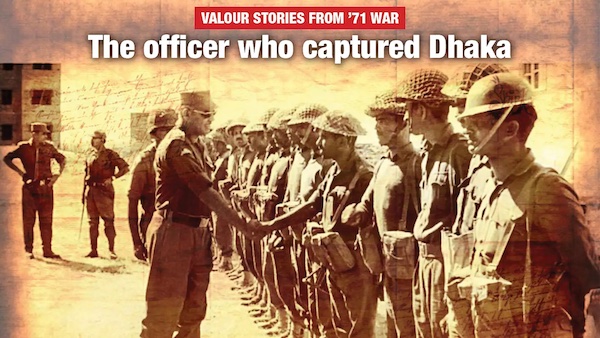
From: Parul Kulshrestha, December 23, 2020: The Times of India
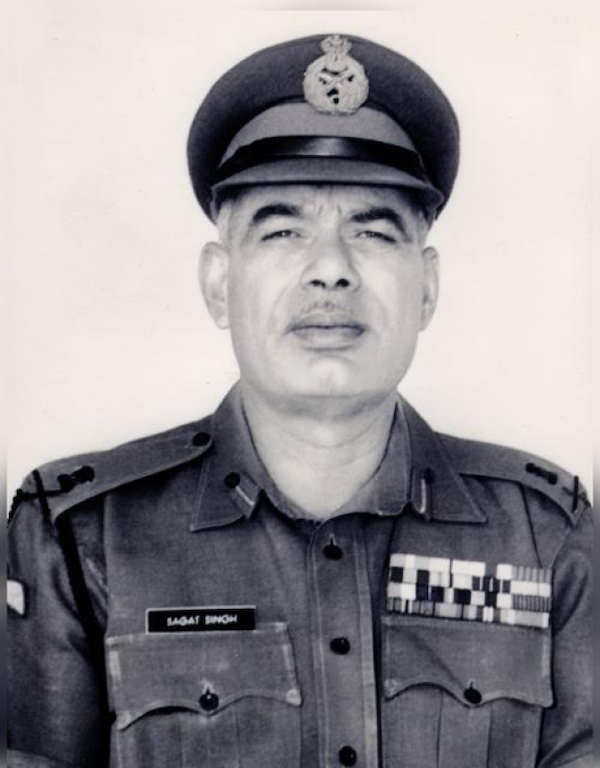
From: Parul Kulshrestha, December 23, 2020: The Times of India
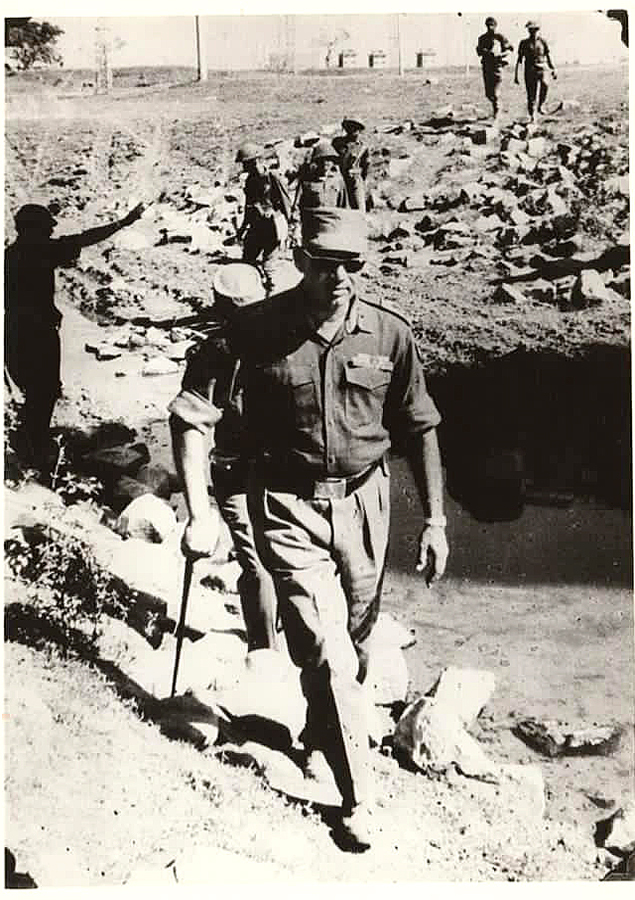
From: Parul Kulshrestha, December 23, 2020: The Times of India
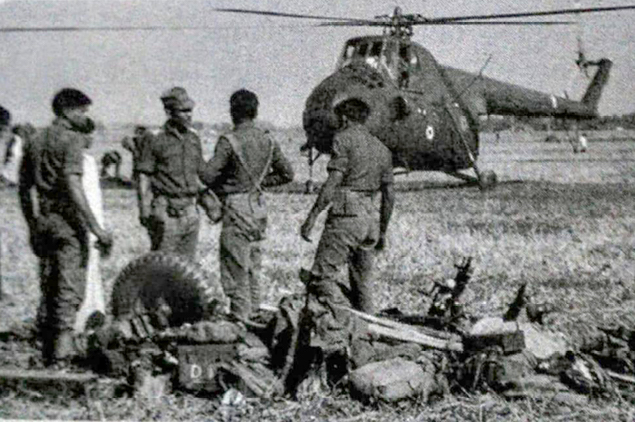
From: Parul Kulshrestha, December 23, 2020: The Times of India
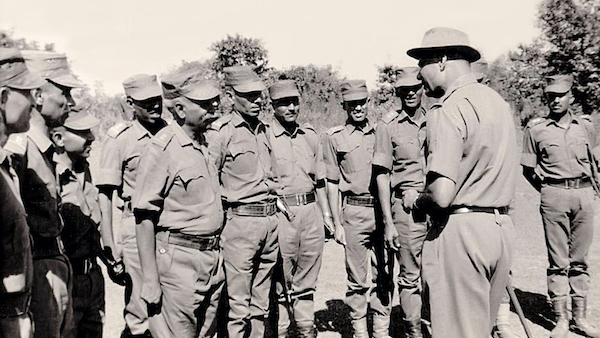
From: Parul Kulshrestha, December 23, 2020: The Times of India
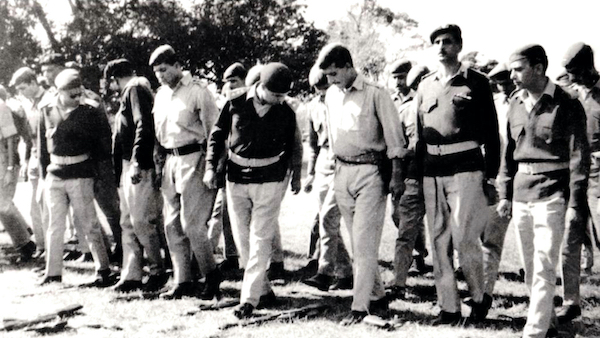
From: Parul Kulshrestha, December 23, 2020: The Times of India
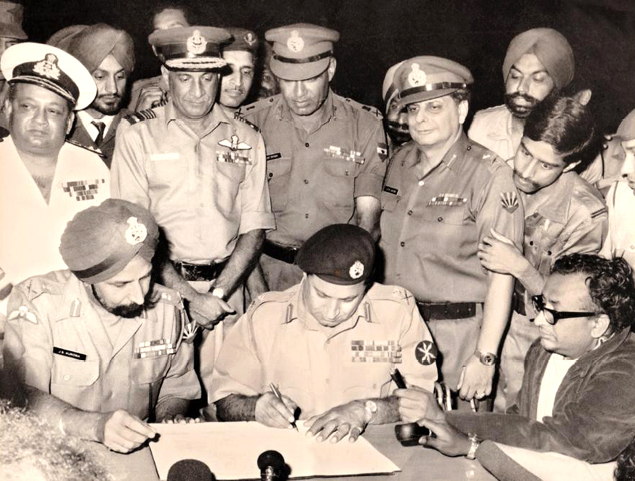
From: Parul Kulshrestha, December 23, 2020: The Times of India
Born July 14, 1919 in Bikaner state of the erstwhile Rajputana, Sagat belonged to a family of soldiers. His father fought in World War I from the famous Camel Corps of Bikaner Risala. After passing out from Indian Military Academy in 1941, Sagat took part in World War II from Bikaner State Forces. After Independence, he opted to be part of Indian Army.
When war broke out in Bangladesh, then East Pakistan, Lt General Sagat Singh, commanding 4 Corps, was given the task to advance and capture all the territory to the east of Meghna river. There were three other battalions as well entering from different directions into East Pakistan.
According to military historians, the original plan was to just capture a major portion of East Pakistan. Major General V K Singh in his book ‘Leadership in Indian Army’ mentions that although Dacca (Dhaka) wasn’t spelt out in the instruction given by the Army headquarters, high commands had decided that once every corps achieved its task, the forces would re-group and then launch a combined attack on Dacca from West. After a few days of war, it became clear to Sagat that only capture of Dacca would end the war. His seniors denied him the permission, which Sagat refused to abide by and started planning to enter Dacca. Pakistanis had destroyed the bridge on Meghna river leaving steamers and helicopter only option to move further.
On December 9, 1971, Sagat commandeered many steamers and used his 12 MI-4 helicopters to airlift the troops to helipads that had been marked by torches. The operation lasted 36 hours. Major General Singh wrote that this was one of the first times when an air-bridge was used to cross a major water obstacle by a brigade group.
After a few days, all the corps started advancing towards their goals and on December 14, the first attack on Dacca took place. Unfortunately, Sagat’s brigade wasn’t the first one to enter Dacca city, but the artillery shelling by his men on the nights of December 15 and 16 hastened the surrender of Pakistan and a ceasefire was declared on December 16. After the liberation of Bangladesh, Sagat was given the responsibility to stay in the newly formed country to maintain peace and security. His prime worry was to prevent men of Mukti Bahini groups (freedom fighters of Bangladesh liberation) from taking pot shots on Pakistani army. He had to shift all the higher Pakistani officials to Kolkata in fear of them getting shot by Mukti Bahini boys.
He sent troops to the Dhanmondi area to rescue Sheikh Mujibur Rahman’s family to safety. By December 25, peace had returned to Dacca.
Despite good performance in the Bangladesh war, earlier in Operation Vijay capturing Goa in 1961 and his wise decision of holding on to Nathu La post defying his senior’s orders in 1967, Sagat was never given any gallantry award. He was awarded Padma Bhushan later, which is rarely given to soldiers. Sagat retired in 1974 and settled down in Jaipur. On September 26, 2001, he passed away after a prolonged illness.
2
Vikram Jit Singh, August 25, 2018: The Times of India
Bullet that played with fate of 1971 war
CHANDIGARH: Had a bullet veered just a few millimetres more, India's offensive to Dhaka over the river Megha may have received a major jolt during the 1971 war. This was when the heroic IV corps commander and Padma Bhushan awardee, the late Lt Gen Sagat Singh, got a bit too daring for his own good and insisted on flying into enemy territory to undertake a recce to locate landing spots for infantry troops to be borne by Mi-4 helicopters. Though the corps commander found one landing spot without trouble, the search for the next one flew into hostile fire with the helicopter receiving quite a few bullets, the pilot a bullet in his upper thigh and another bullet grazing Lt Gen Singh's forehead and piercing through his peak cap.
These incidents and anecdotes of `Op Cactus-Lily' were revealed in a fascinating audio-visual presentation on Tuesday by retired Air Marshal Man Mohan Singh (Vir Chakra), who led the 15 Squadron of Gnats during the War. “Jorhat station commander Group Captain Chandan Singh tried hard to discourage Lt Gen Singh from going for the recce but the latter was insistent. Lt Gen Singh was of the view that the Pakistanis did not have a continuous line of defence on the western side of the Meghna river and there would be gaps where our troops could be landed. So, off he flew with a reluctant Group Captain Chandan for the recce and they had a providential escape. On getting to know of the incident and location of the fire, my squadron scrambled some gnats and we blew up that location and the buildings there with rocket fire,“ Air Marshal Singh told TOI.
Lt Gen Singh, who also was in the vanguard of the 1961liberation of Goa as then commander of the 50 (Independent) Parachute Brigade, certainly was aleader who brooked no `ifs and buts' when it came to operations. “After the troops had landed across the Meghna river, Lt Gen Singh asked the commander of a squadron of PT-76 amphibious tanks to cross the river. The squadron commander pointed out to Lt Gen Singh that the Meghna was 1.5 km wide and subject to intense tides of 8 knots. The PT-76 tanks were meant to cross European rivers, which were as docile as canals.However, Lt Gen Sagat was firm. He told the squadron commander that get the tanks across even if half of them sink. The orders were obeyed and the tanks went across, though a few of them stalled midway and timely help of local river folk helped them to cross safely,“ recounts Air Marshal Singh.
Lt Gen Singh was able to race through to Dhaka by crossing the Meghna using courage and tact. The stage was now set for the mega event of `Surrender at Dhaka', December 16, 1971.“While the photograph of the Eastern Army Commander, Lt Gen Jagjit S Aurora at the surrender ceremony is truly an iconic one, what took everyone by surprise was that Lt Gen Aurora flew in for the ceremony in an Avro aircraft from Kolkata to Agartala with his wife in tow.From Agartala, the couple then took a helicopter to Dhaka for the ceremony . I also flew down to Dhaka for the ceremony with Group Captain Chandan Singh.What took everyone by surprise was the presence of Aurora's wife for wives are not taken into the war zone. I believe the then Army COAS ticked off Lt Gen Aurora for the transgression,“ Air Marshal Singh told TOI.
A memorable encounter at Dhaka was with the Pakistan Air Force's Air Officer Commanding, Dhaka, Inamul Haq, who was a prisoner and later rose to the rank of Air Marshal. “I saluted and introduced myself as the 15 Squadron commander of Gnats and we exchanged due courtsies. He was curious to know which special bombs the Russians had given to the IAF that had so accurately bombed out the PAF runaways at Tezgaon and Kurmila. I told him that the IAF's Squadrons 4 & 28 of MiG 21 FLs had used 'dumb' bombs or free-falling bombs (USSR-made 500 kg, M-62 bombs) but there was nothing special about them. Haq was very impressed with the bombing accuracy and commended the IAF bomber pilots,“ recalled Air Marshal Singh.